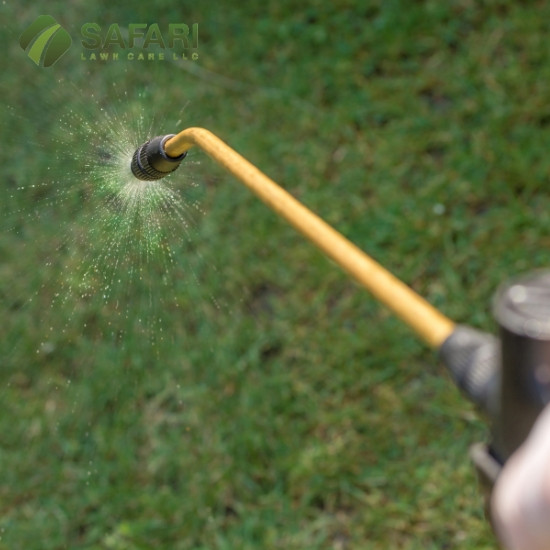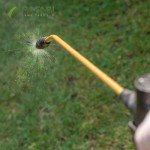Protecting Your Green Space: Easy Tips for Managing Lawn Pests
Don’t you just adore that lovely green carpet you call your lawn? But sometimes, those little uninvited guests show up – the lawn pests. They might be tiny, but they can really mess with your lawn's appearance, turning that beautiful green into a sad, patchy brown.
You don’t need to become some kind of bug whiz with a secret lab in your shed! This isn't about going to war with all those scary chemicals. It's more about getting to know these little critters, figuring out some smart moves, and helping your lawn become strong enough to tell those pests to go away. Think of yourself as the cool but firm protector of your green lawn.
Spotting the Usual Suspects
Before you can tackle a pest problem, you gotta know what you're up against. Different critters leave behind different signs. Here are a few of the usual suspects and what to keep an eye out for:
-
Grubs: These C-shaped critters live underground, feasting on your grass roots like an all-you-can-eat buffet. You might notice odd brown patches that lift up like loose carpet, followed by birds flocking to your lawn for a digging frenzy.
-
Chinch Bugs: These tiny sap-suckers act like grass vampires, especially in sunny areas. Look for irregular yellow or brown patches, often starting near sidewalks or driveways. To check for them, try this trick: push both ends of an old tin can into the damaged spot, fill it with soapy water, and watch if any bugs float to the surface—gross but effective!
-
Sod Webworms: Their larvae create silky tunnels in the thatch (the layer of dead grass) and emerge at night to munch on grass blades. Signs include small brown moths fluttering at dusk and patchy, chewed-up brown spots.
-
Armyworms & Cutworms: These caterpillar-like pests are like tiny lawnmowers with legs—and huge appetites! They can strip large patches of grass overnight. Since they’re nocturnal, you’ll often find them hiding in the thatch or soil during the day.
-
Ants: While they don’t directly harm grass, large ant colonies can create lumpy lawns. Sometimes, they even protect other pests that damage plants, so keep an eye out for big mounds.
Happy Lawn, Happy Life (and Fewer Pests!)
The best way to keep pests away is to have a lawn that's just too healthy and strong for them to bother with. Think of it like building a really solid house – it's harder for the bad guys to break in! Here's how to make your lawn a fortress:
-
Water Wisely: Your lawn doesn’t need a flood—just a good, deep drink now and then. Let the top inch or two of soil dry out before watering again, and try to do it in the morning. That way, the grass dries by nightfall, reducing the risk of icky fungus.
-
Mow Like a Pro: Keep your grass a little taller—it’s not just about looks! Longer blades shade the soil, locking in moisture and crowding out weeds (plus, some pests hate that). Stick to the highest recommended height for your grass type.
-
Let It Breathe: Compact soil is like tight jeans—it doesn’t let roots move or breathe. Aerating (poking holes or pulling up small plugs) once or twice a year keeps the soil loose so roots grow deep and strong.
-
Feed It Well: Your lawn needs nutrients, just like you do—but don’t overdo it. Too much fertilizer can make your grass a pest magnet. Stick to a solid feeding schedule based on your grass type and climate.
-
Clear the Clutter: A thick layer of dead grass (thatch) is like a bug hotel, blocking water and nutrients. If it’s over half an inch thick, it’s time to dethatch and give your lawn some fresh air.
Taking Action
Even with a super healthy lawn, sometimes those pest numbers just get out of hand. Here are some things you can do:
-
Meet the Nematodes: These microscopic worms are like your lawn’s secret bodyguards! Beneficial nematodes hunt down grubs, cutworms, and other troublemakers, taking them out naturally—no chemicals needed.
-
Soap ‘Em Up: A simple spray of insecticidal soap works wonders on soft-bodied pests like chinch bugs and armyworms. It breaks down their protective layer, leaving them high and dry. Just make sure to hit them directly for the best results.
-
Neem Oil Power: Straight from the neem tree, this natural neem oil throws pests off their game—messing with their appetite and growth. It’s a gentle but effective way to keep bugs in check.
-
When All Else Fails (Use Chemicals Wisely): If things get out of hand, targeted insecticides can help. But always choose the right one for your specific pest, follow the instructions to the letter, and spot-treat only the affected areas—no need to drench the whole lawn.
Alway Keep an Eye Out
Dealing with lawn pests isn't a one-time thing. It's about keeping an eye on your lawn, doing what you can to keep it healthy, and stepping in when you see trouble brewing. Regularly walk around your lawn and see if anything looks off. By knowing what to look for, building a strong and healthy lawn, and taking action when needed, you can definitely keep those tiny tyrants from taking over your green paradise. Safari Lawn Care's experienced technicians offer professional insect control to maintain healthy, pest-free lawn. A little bit of attention goes a long way in keeping your lawn the star of the neighborhood!




